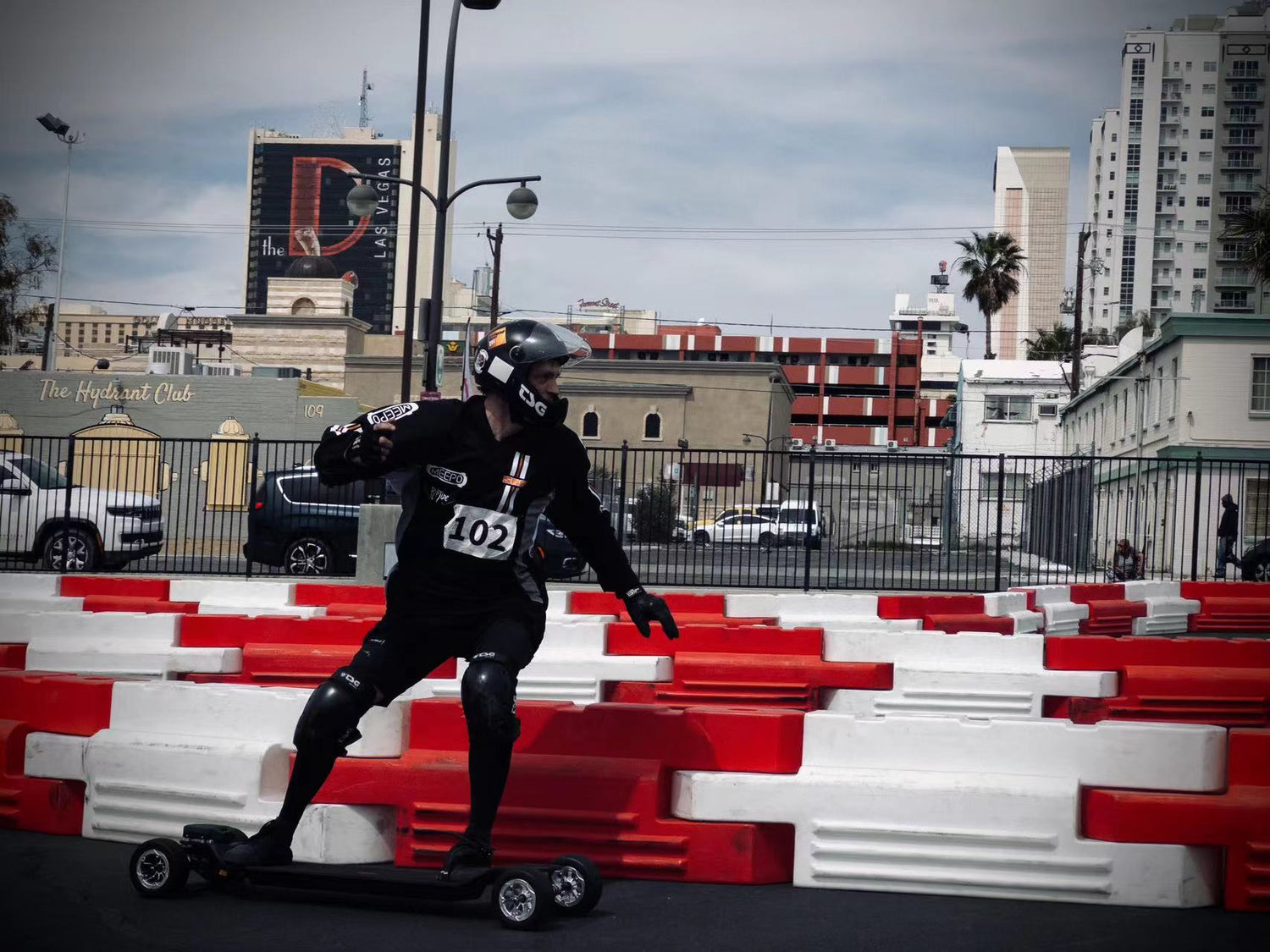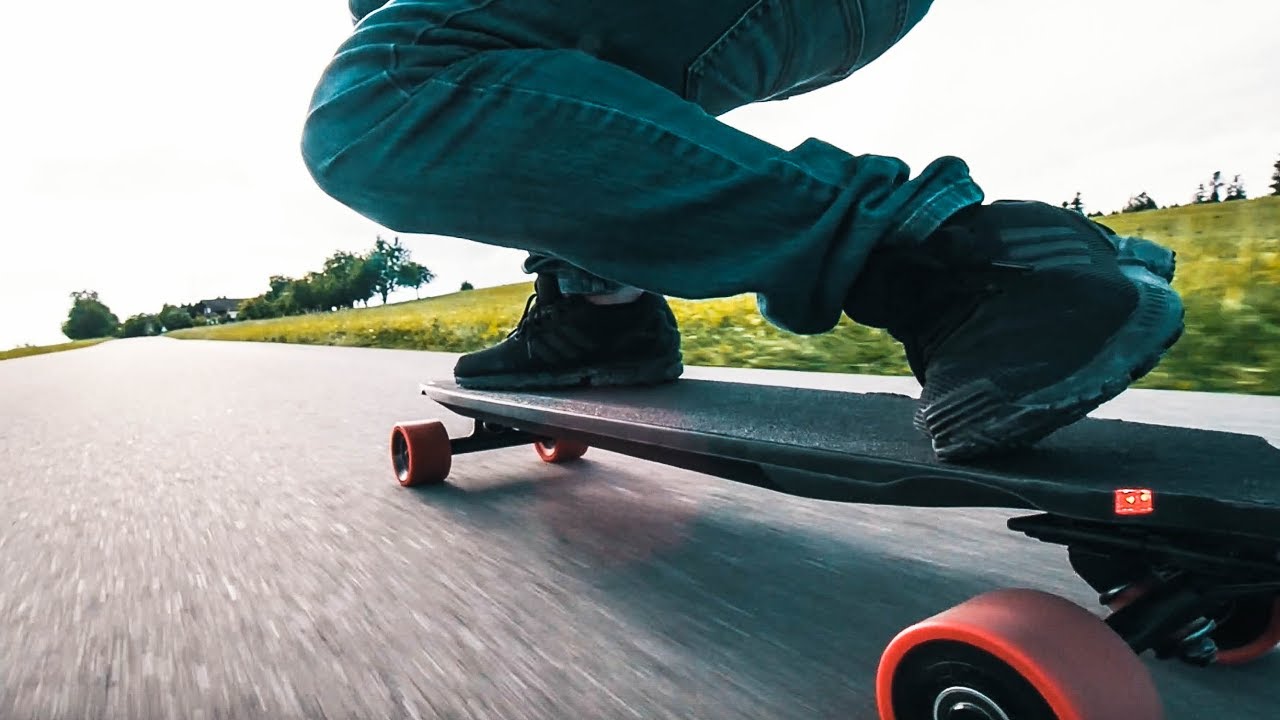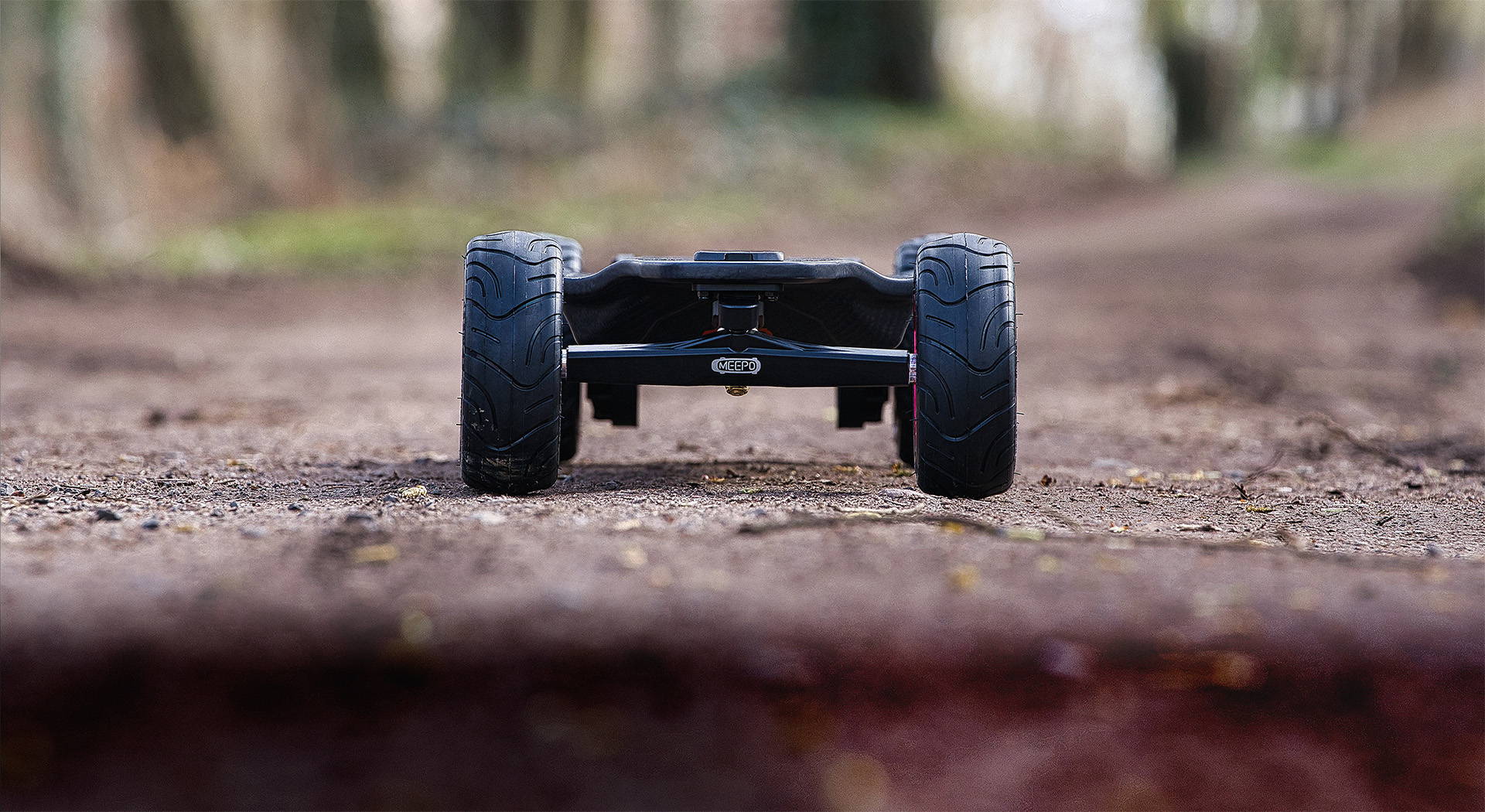Kieran, founder and CEO of Meepo first discovered 3 link trucks at the eskate racing event in China 2019. Mr. Kieran had the privilege of meeting the champion, Tilo Zed Zhu. They talked about the benefits of 3 link trucks. He emerged victorious in the race and consistently emphasized to Kieran that 3 link trucks are the best choice for racing and tight turns offering best in class stability at high speeds. Traditional trucks can be set up for either high speed stability or tight turns, not both. 3 link trucks change that.

When got back from the event, he asked Anderw from Carvelab to order a set of 3 link trucks. The package had cost him 2500 USD including shipping and tax to China.
“I don’t know what to do with it, we can make drawings and start playing with it, try to understand how it works. ” Kieran said.

We applied for the patent of these 3 link trucks in China hoping to use it and protect us until one day in future where we want to produce them. Then, some time later, Cal from Terminal X messaged Kieran on saying that the Patent is a problematic as it hurting badly the original designer, Moe from Stooge raceboard.
"This goes against my original goal.” Said Kirean.”I can help transfer the patent to Moe, for free.” He continued. He even asked Moe for his personal information to complete the transfer of the ownership. Then, Moe and Brain from Madwheels approached Kieran and together they suggested they collaborate in order to bring this advanced truck technology to more people. “I realized this is an opportunity.” Moe wanted it to be manufactured in China in order to make the trucks more accessible. Meanwhile MEEPO needed Moe's assistance with design and innovation.

That's when our collaboration began. We worked together to manufacture 3 link trucks, making them available to a wider audience. Affordable, with original design and refined overtime. Moe liked the prototypes that we made. We made them from metal using CNC. They looked great. Moe advised Kieran to use 4130 steel together with high pressure and high temperature ASTM A193 grade B6 manufacturing process. This method makes the final product stronger with higher tensile strength. Moe advised Meepo with welding, adjusting angles and fisheyes, ect. The prototypes were successful. “We're Almost there if we can fix like 5 – 8 minor problems.” Commented Kieran at the time.


Moe made a hand-drawn sketch and provided important instructions of the Monsoon Legacy Raceboard (MLR) with an important note, which Kieran brought back to China. From there, we started manufacturing with the goal of completing them within 3 months, enabling us with enough time to transport them to ESK8CON for riders Fess and Davide Bonde to race on.

Back in China, we started building the Monsoon Legacy Raceboard (Moe named it, we don't understand the meaning. But we used it.). We had very limited time to get 3 demo boards produced and shipped before the first of March.

The process was not achieved in one go, but rather took a significant amount of attempts. The board did not turn well at first. When we leaned, the deck moved, but the axles didn't. We needed to understand the details of how each component and position affect each other and the turning radius. We had to edit and manufacture truck parts multiple times prototyping along the way. After numerous attempts at adjusting the truck settings, the first prototype still had a poor turning radius. We learned a lot from our consultations with Brain and Moe. We found out that the issue was caused by the first piece that was produced.




After fixing it, finally the board had a good turning radius. We achieved a very small one around two meters. With everything dialed in we were ready to build three prototypes so we could bring them to ESK8CON to race.
Kieran has a great passion for this skateboard. “In the end, we found the truck worked great. I was shocked at how much more stable it was and how much easier it was to turn, compared to traditional trucks. I love it. Even for commuting or recreational riding, I love it.” He added.
The success of the first skateboard produced is evident for all to see.

We got the trucks up and running. Then we needed the power for the race. We started by enlisting our ESC (electric speed controller) engineers to customize the programme for our board. So we simply sat on it, wrote the code and conducted testing, debugging and optimizing it for several days.
To power everything we decided to use a 67.2 volt 16S2P battery. (16 cells in series for high voltage and 2 packs in parallel for high current).
There are three reasons for this:
Firstly a 16S voltage is more than sufficient enough to drive a 3000-watt motor. Higher voltage directly transfers to higher efficiency, because less energy is lost to heat. With higher voltage we can use less amps to achieve the same power. The MLR is one of the first production boards using 16S voltage.
With good motor efficiency and optimized ESC, we can achieve an acceleration of over 1.5G. We opted for two 6874 brushless motors. They are sufficient to deliver a powerful initial acceleration, without being too heavy and sacrificing handling of the board.
As for batteries, we directly purchased the MOLICEL P45B from MOLICEL TAIWAN. P45Bs are a direct evolution of the P42A. The best high discharge rate for eskate application. We introduced the P42A in our Hurricane board, which enabled us best in class acceleration at the time. Now we are moving one step further with the P45B. Each cell has a 45A continuous discharge rate. This is by far the highest in the industry. The P45Bs are a perfect choice for a raceboard. Ask anyone racing competitively and you will find out that they also use molicel cells. It enables us to use a smaller pack, contributing to the lower weight of the board. Our engineers assured us that a continuous current draw of up to 100A is not an issue with a 16S2P configuration.
Additionally, we wanted to demonstrate to the world that we don't really need a very large battery like 6P or 8P when we don't require an extensive range. The best in class cells allow us quick changing at the racetrack. We firmly believe that the 6874 motors together with the P45B cells we use are more than powerful enough because we are driving with a very high voltage and efficiency in the 0-9000 RPM range.
Eventually, the entire industry needs to understand that we don't need voltages higher than 16S and motor ratings of 10,000 watts. A quality 3000-watt motor can give you a powerful kick-off acceleration. We hope that more people will move away from the competition focused on motor and voltage numbers, as well as battery capacity, and instead pay more attention to actual torque, efficiency, and mainly reliability. The competition for higher and higher numbers brings higher and higher weight and we are already at a point where electric skateboards are straying away from their original purpose. Being a lightweight and fun mode of transportation. Eskates are getting heavier and heavier while slowly losing portability and handling in the process. The MLR is meant to prove that you can achieve exceptionally high performance and power, without sacrificing portability, weight and handling.
In the end, we successfully achieved our goals. With the help of Brain from Madwheels, Linn from Linnpower, and MOE from Stooge Raceboards, we were able to prepare two out of the three MLR racing boards for ESK8CON within three months. And in the process we turned ideas into products. Fess even took the lead in the final ground race in the PRO group with the MLR! And Davide Bonde secured second place in the Advanced group with his MLR. This is a significant success considering that none of them had ever ridden these MLR boards before the race. With more practice time, they can definitely push these boards even further and achieve even faster times.




And it's worth mentioning that Moe served as an advisor during the competition, providing us with assistance and support. We want to thank him for that and we look forward to our further cooperation.






